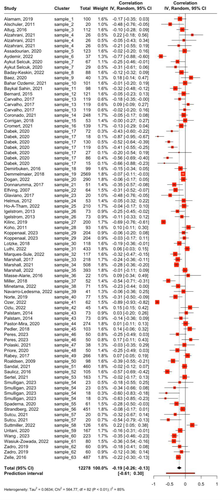
HUTCHINSON Jasmin
- Exercise Science, Springfield College, Springfield, United States of America
- Exercise & Sports Psychology
- recommender
Recommendation: 1
Reviews: 0
Recommendation: 1

Kinesiophobia and physical activity: A systematic review and meta-analysis
Evidence of the Association between Kinesiophobia and Physical Inactivity
Recommended by Jasmin Hutchinson based on reviews by Paquito Bernard and 1 anonymous reviewerThis article (Goubran et al., 2024) presents a comprehensive systematic review and meta-analysis examining the relationship between kinesiophobia and physical activity. The inclusion of multiple health conditions and diverse measures of physical activity and kinesiophobia provides a broad perspective on the issue.
Kinesiophobia (i.e., an excessive, irrational, and debilitating fear of movement) is thought to contribute to negative affective associations towards physical activity and avoidance behaviors, leading to decreased engagement in physical activity. Thus, the relationship between kinesiophobia and physical activity merits further investigation, particularly in health conditions where physical activity has a preventative and/or therapeutic role.
The results of this meta-analysis (k = 83, n = 12,278) indicate a small-to-moderate negative correlation between kinesiophobia and physical activity (r = −0.19; 95% CI: −0.26 to −0.13; I2 = 85.5%; p < 0.0001.) Substantial heterogeneity and publication bias were noted, but p-curve analysis suggested true effects. Notably, this finding was consistent across studies using both self-report and objective device-based measures, and there was no evidence of a moderating effect of different measurement instruments or physical activity outcomes.
Subgroup analyses revealed that the negative association between kinesiophobia and physical activity is significant in patients with cardiac, rheumatologic, neurologic, or pulmonary conditions but not in those with chronic or acute pain. This latter finding underscores the need to distinguish kinesiophobia from pain. Understanding that the fear of pain, injury, or aggravating an underlying condition, rather than actual pain, is associated with physical inactivity is important to consider when developing interventions to promote physical activity. Tailored interventions that address kinesiophobia specific to different health conditions could enhance physical activity levels and improve health outcomes. Further research is needed to explore the mechanisms underlying kinesiophobia and evaluate the efficacy of targeted interventions to mitigate its impact.
This article makes an important contribution to our understanding of the relationship between kinesiophobia and physical activity. It provides evidence that fear of movement can be a barrier to physical activity in certain health conditions and highlights the need for condition-specific approaches to address this issue. This work is highly relevant for clinicians, researchers, and public health policymakers aiming to improve physical activity levels and overall health outcomes in a variety of populations.
References
Goubran, M., Farajzadeh, A., Lahart, I.M., Bilodeau, M. & Boisgontier, M.P. (2024). Physical activity and kinesiophobia: A systematic review and meta-analysis. MedRxiv, version. 3 peer-reviewed and recommended by Peer Community in Health and Movement Science. https://doi.org/10.1101/2023.08.17.23294240